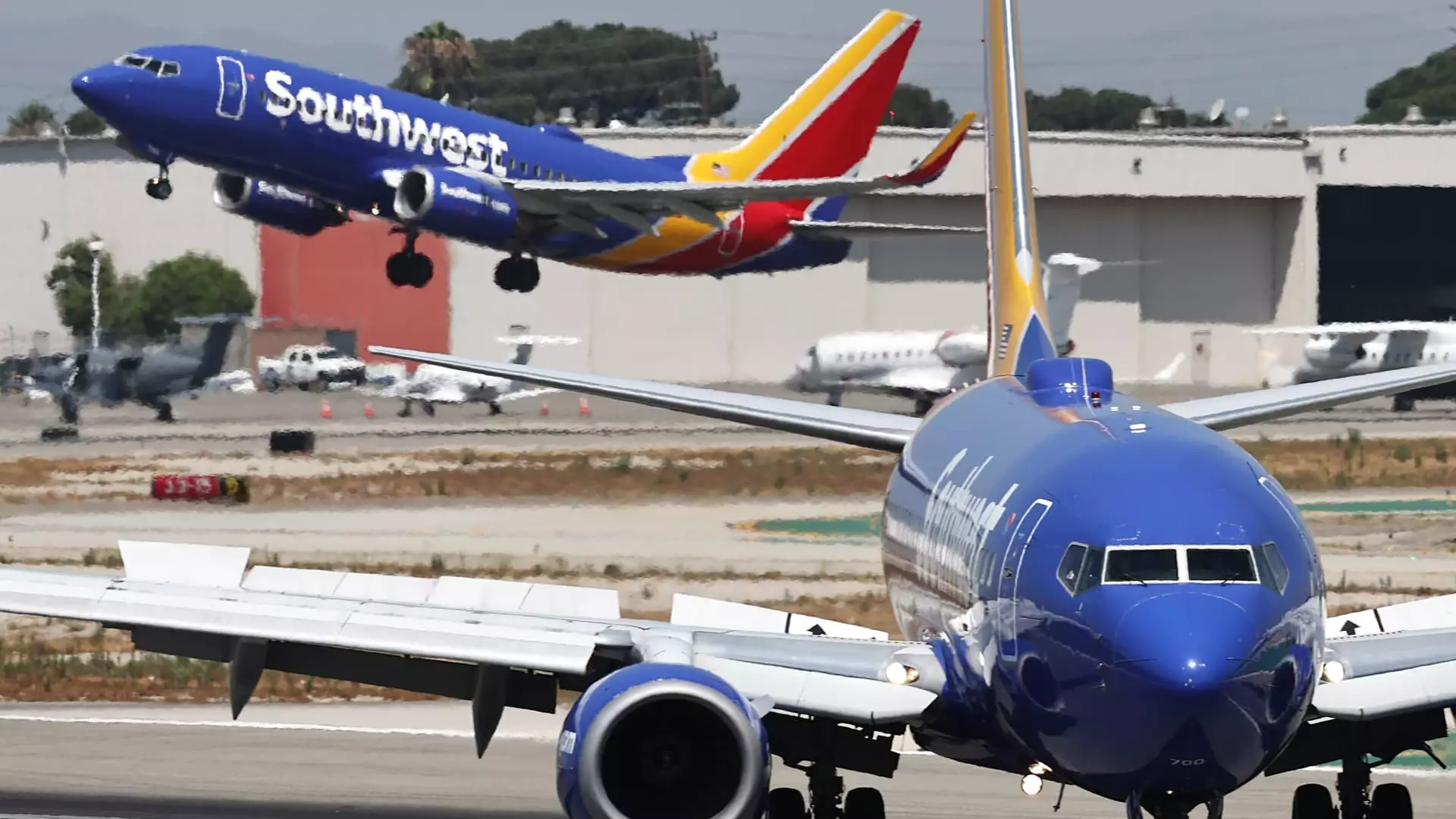In an era where the aviation industry faces unpredictable challenges, Southwest Airlines stands at a crucial juncture. Amidst pressures from activist investment firms and changing market dynamics, the airline has made strategic revisions to its business model. Recently, the airline raised its revenue projections for the third quarter, unveiling major initiatives aimed at revitalizing its operations and solidifying its market position.
On a positive note, Southwest Airlines adjusted its revenue forecast for the third quarter, projecting a unit revenue increase of up to 3% year-over-year. This marks a significant turnaround from earlier projections that anticipated a decline of 2%. This adjustment reflects the airline’s agility in response to market demands. A component of this unexpected gain can be attributed to passenger rebookings from rival airlines that were affected by a significant operational disruption in July, a testament to Southwest’s ability to seize opportunities as they arise.
Board Revitalization: Welcoming Industry Expertise
In a bid to strengthen its leadership team, Southwest’s board has appointed Bob Fornaro, a seasoned aviation executive recognized for his sustainability in the competitive landscape. Fornaro’s history with both AirTran and Spirit Airlines provides Southwest with insights and experience that can leverage its operational strategies. The decision to enhance board dynamics with knowledgeable professionals comes at a critical time, as the company is navigating pressure from Elliott Investment Management, which is advocating for a comprehensive leadership overhaul.
Strategic Vision Presentation: Building Investor Confidence
On the horizon, Southwest’s executives articulated their roadmap during a recent investor day presentation. The strategic discourse, led by CEO Bob Jordan and his team, aimed to reassure stakeholders about the airline’s future profitability and revenue growth potential. This presentation was particularly crucial; as investor sentiment transforms across the airline sector, it is essential for Southwest to project an image of resilience and adaptability.
This summer, Southwest Airlines introduced a variety of significant shifts to its operational framework, including a transition toward more assigned seating and the introduction of extra-legroom seats—changes that reflect broader trends in the airline industry. While these modifications are expected to take time to materialize fully, projections suggest that such enhancements could lead to a remarkable increase in revenues, estimating around $1.7 billion in earnings before interest and taxes by 2027. The addition of more comfortable seating, particularly, aims to meet rising consumer expectations for in-flight experiences, thus enhancing the attractiveness of Southwest compared to competitors.
Despite evolving market pressures, Southwest has reaffirmed its dedication to customer-friendly policies, such as allowing two free checked bags. This commitment illustrates the airline’s emphasis on customer experience as a driver of market share growth. The contrast with airlines adopting baggage fees could lead to a continued competitive edge, underscoring the importance of brand loyalty in turbulent times.
However, the airline does face significant operational challenges, specifically delays in acquiring new aircraft from Boeing, which could hinder its service offerings. The absence of smaller aircraft options has necessitated route reductions in unprofitable areas, such as Atlanta. This operational recalibration could impact regional market presence and necessitate tough decisions regarding personnel and service capabilities.
Southwest Airlines finds itself in a transformative period characterized by strategic reinvestment and adaptation to change. With fresh leadership influence, an overarching focus on customer satisfaction, and groundbreaking modifications to its business model, the airline appears poised to navigate through its current challenges. As it continues to evolve and innovate, the path ahead may remain fraught with uncertainty, yet the groundwork being laid suggests a commitment to both resilience and growth in the competitive aviation landscape.

Leave a Reply